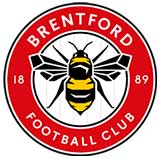Glossary of Horse Racing Terms
Horse racing has a vast array of terms and phrases, some of which you may not be familiar with.
Understanding the jargon can be tricky, especially if you’re just getting into racing. Our cheat sheet should help give you a schooling (more on that further down) on all you need to know about the sport:
A
Accumulator
Sometimes known as an ‘acca’ or Parlay, is a bet consisting of four or more selections that are combined into one bet. To win an accumulator, all selections must be winners.
Ante-Post betting
A bet made at least 1 day in advance of a race. The odds are likely to be better, however there is no guarantee that the horse will run as an ante-post bet (in racing) generally means the wager has been made before final declarations.
B
Backstretch
The straight length of the track on the far side of the course from the stands
Bar
The lowest odds for horses not mentioned in betting forecasts.
Bismarck
Not the ship, but a favourite for a race which the bookies do not expect to win.
Blinkers
Cups sewn into a hood to restrict the horse’s sideways vision with the aim of reducing distractions and maintaining focus. Denoted on a racecard by a small ‘b’ next to the horse’s weight.
Bottle
Slang terms for odds of 2/1.
Boxed in
During a race when a horse cannot overtake due to other horses blocking their way.
Bumper
National Hunt Flat race, most often utilised by trainers to give their runners experience before making their way into jumps races.
C
Canadian
Also known as a Super Yankee. Picking 5 selections across 5 races to create 26 bets. It is made up of 10 doubles, 10 trebles, 5 four-folds and a five-fold accumulator. At least two horses must win to get any returns.
Caulk
An extra part of the horse shoe that projects out to help get traction, especially on wet surfaces.
Chase
A National Hunt race involving fences.
Checked
When a horse’s run during a race is momentarily blocked by another horse or horses.
Cheekpieces
Headgear which consists of pieces of sheepskin placed on either side of the bridle and performs a similar job as blinkers.
Classic
Grade 1 contests confined to three-year-olds, of which there are 5 in Britain: the 1,000 Guineas, the 2,000 Guineas, the Oaks, the Derby and the St Leger.
Claimer
An apprentice Flat jockey.
Co-favourite
Term to describe when 3 or more favourites begin the race with the same starting price.
Colours
The jockey’s jacket (or ‘silks’) by which you can identify rider and runner.
Colt
An uncastrated male horse aged four years old or younger.
Connections
Word used to describe a horse’s owners and trainer.
D
Daily Double
Picking two horses to win in sequential/successive races.
Dam
The mother of a horse.
Dead-heat
When it cannot be distinguished between two (or more) horses at the finishing line, leading to a split in the prize money.
Declared
When a horse is officially announced to be running in a race.
Deductions
When a horse is scratched (removed) from the race card after betting has already opened, deductions are taken out of the bets in proportion to the odds of the horse.
Double
A multiple bet consisting of two selections in separate races.
Draw
In Flat racing, to denote a horse’s position in the starting stalls.
Drift (Drifting)
Term to describe when the odds of a horse are getting bigger (ie. That horse is deemed less likely to to win than what it was).
Drop in class/trip
A horse racing in a lower class of race than he has recently run in or running over a shorter distance than what they are used to.
E
Each Way
This counts as 2 bets; 1 on the horse to win and the other on the horse to place. ‘£5 each way on that horse’ is equal to a £10 bet.
Even Money Bet
When your betting stake returns the same amount in winnings (1-1 fractional odds or 2.0 decimal odds).
Exacta
Also known as a Straight forecast, this is a bet that picks the correct finishing order of the winner and second place.
F
Favourite
The horse deemed most likely to win its race.
Fences
Type of obstacle jumped during chase races. There are different types of fence; an open-ditch, the water jump and a plain fence.
Filly
A female horse aged four or younger.
Fixed Odds
When you place your bet, the odds will stay that way for your bet, regardless if it changes before the race.
Foal
A horse under a year. Horse are always measured from Birth to 1st of January the following year.
Furlong
A measurement of distance. Specifically, an eighth of a mile, 220 yards or just over 201 metres.
G
Gallop
A training strip used to exercise horses.
Gelding
A male horse that has been castrated.
Going
The underfoot conditions at the racecourse, ranging from heavy to firm.
Going down
When horses are on their way to the start
Graded Race
There are three types of grading, 1 being the highest, followed by 2 and 3.
Green
Used to describe an immature or inexperienced horse.
Group 1
The highest category of Flat race. The Classic Flat races in Britain, as well as other historic races such, are Group 1.
H
Hacked Up
Term sued to describe a horse winning a race with ease.
Hand
Horses are measured in hands, i.e. 16 hands is the average for a Thoroughbred and equals 64 inches from the top of his shoulders to the ground. 1 hand equals 4 inches.
Handicap
A type of race where each horse is allotted a different weight to carry, according to the official handicap ratings determined by the BHA Handicappers.
Handicap Mark (Rating)
Each horse, once it has run a few times (usually three), is allocated an official handicap rating by the BHA, which is used to determine its weight if it runs in a handicap. If a horse does well, its handicap rating will go up; if it performs poorly, its rating will go down.
Hood
Another type of headgear fitted over the horse’s head to cover its ears and muffle the noise of a raceday.
Hurdles
The smaller obstacles on a jumps course. Horses usually have a season or two over hurdles before progressing to fences.
I
In The Money
A horse that ‘places’ in a race, thus ensuring a return for a person who has staked an each way bet on that horse.
In-running
Refers to anything that happens during a race.
J
Jockey
The person riding the horse.
Joint-favourite
Term to describe when there are 2 favourites that begin the race with the same starting price.
Juvenile
A two-year-old horse. Every horse officially turns two on January 1, at the start of the second full calendar year following its birth. For example. Even if a horse was born in December of 2016, it will have turned two on January 1, 2018.
K
L
Left-handed track
Racecourse where horses run anti-clockwise.
Length
A unit of measurement for the distances between each horse at the finish of a race; the measurement of a horse from head to tail.
Listed race
A race that is below Grades (or Groups) 1, 2 and 3 but is considered to be better than a handicap race or a conditions race.
Lucky 15
A multiple bet on 4 different selections that consists of 15 separate bets; 1 four-fold (accumulator), 4 trebles, 4 singles and 6 doubles thus covering every possible combination of bets.
M
Maiden
A horse that hasn’t won a race.
Mare
A female horse aged five or older.
Minimum trip
The shortest race distance: five furlongs on the Flat, two miles over jumps.
N
Nap
The most fancied runner tipped up by someone on any given day.
National Hunt
Also known as jumps racing.
Neck
A unit of measurement used to describe a winning margin in a close finish.
Non-runner
A horse withdrawn from a race for which it had been declared.
Noseband
A strap that goes over a horse’s nose to secure the bridle.
Novice
A horse that is still young but has already won at least one race.
Novice Stakes
Flat race for 2-year-olds or 3-year-olds that have not won more than twice.
Nursery
A handicap race for two-year-old horses.
O
Objection
A formal complaint made by one jockey about another rider.
Odds
The chances of a horse to win a race, expressed as either a fraction or a decimal.
Official Result
This is the result declared after the ‘Weighed-in’ declaration has been made and after which stage bets will be paid out on.
Off the bridle
Term to describe a horse not travelling well.
On the bridle
Term to describe a horse that is travelling well.
On The Nose
Picking a horse to only win.
Open Ditch
Steeplechase jump with a ditch on the approach side to the fence.
Outsider
A horse whose chance of winning is considered unlikely according to the betting market.
Out of the money
A horse that finishes outside of the place money.
P
Pacesetter
The front running horse that is leading the pack; usually with the aim of setting a fair tempo in order to benefit a stablemate (who is also running) with the same connections.
Paddock
The area of a racecourse where horses are paraded before each race. Often referred to as the parade ring.
Patent
Multiple bet consisting of 7 bets involving 3 selections in different events. A single on each selection, plus 3 doubles and 1 treble. 1 successful selection guarantees a return.
Penalty
Extra weight that a horse may have to carry if it has previously won a handicap race.
Photo Finish
When 1 or more horses are particularly close at the finish line, requiring the raceday judge to consult a photo before declaring the winner or a dead-heat.
Place
Finishing within the top few horses. The amount of places depends on the number of runners in a race . As a general rule, if there are between 2-4 runners = 1 place only. Between 5-7 runners = 2 places. Between 8-15 runners = 3 places. If there are 16 or more runners = 4 places.
Poly track
Is made up of sand, recycled synthetic fiber and recycle rubber. Also known as an All-Weather track that allows races to be run in bad weather.
Pulled Up
A horse who is brought to a halt during a race by its jockey.
Price
An alternative term for odds.
Pulling
A horse who is keen during a race and wants to go faster than its jockey is allowing.
Pushed Out
A horse who has gone clear of its rivals in a race after minimal urging from its jockey.
Q
R
Racecard
A programme with information about the day’s races, detailing declared runners, their form and more.
Rails
White plastic rails are used to mark out the track on a racecourse. A horse referred to as being ‘on the rails’ or ‘against the rails’ is running close to the rails, which often helps a horse to keep a straight line in a race finish.
Rail runner
Horses that tend towards running next to the inside rail.
Rating
Score given to a horse based on certain criteria such as its past performances. The better a horse’s rating the more likely it is to win a race.
Right-handed track
Racecourse where horses run clockwise.
Rule 4
The rule that declares the amount of money that will be knocked off a winning bet in order to allow for a non-runner.
S
Scratch
A Horse removed from running before the race starts.
Schooling
A term to describe a horse being trained and getting practice over obstacles.
Shadow Roll
Horses get distracted by their shadows, so this soft wool roll on it’s face stops him from seeing it.
Shorten
When the odds of a horse become smaller, or that horse is deemed more likely to win that it was before.
Silks
An owner’s colours.
Single
1 bet on 1 selection in a race.
Sire
The father of a horse.
Springer
A horse whose odds shorten quickly and dramatically.
Sprinter
A horse that specialises in running over the shortest distances (five and six furlongs) on the Flat.
Stable Jockey
A jockey that is signed up to ride for a particular trainer from a specific stable.
Stallion
Male breeding horse.
Stalls
The box from which horses begin Flat races.
Starting Price (SP)
The odds at which a horse ‘goes off’ or starts the race.
Staying on
A phrase used by race commentators or in post-race comments referring to a horse who finished strongly during the closing stages.
Staying Races
Flat races run over a distance of two miles or more.
Steeplechase
A type of National Hunt race that is typically participated in by the best and most experienced horses. The obstacles on such a course are normally much harder to jump than in a Hurdle, including water jumps and open ditches.
Stewards’ Enquiry
An inquiry held at the racecourse on a raceday after any given race. The panel is advised by the stewards.
Stud
An establishment set up for breeding of horses. Stallions are based at studs and are sent mares to breed with.
Sure thing
A horse that is regarded as having little chance of losing.
T
Tailed off
A horse that drops away from the front runners so much that it is unlikely to catch up to them.
Thoroughbread
A breed of horse used for racing
Tongue-tie
A strap or piece of stocking used to tie down a horse’s tongue to prevent the tongue getting over the bit which affects a horse’s breathing.
Trainer
The person responsible for looking after a horse and preparing it to race.
Treble
3 selections in to win 3 different races. Adding one more selections makes it an accumulator.
Trip
Another term for the distance of a race.
Triple Crown
To win the Flat Triple Crown in Britain, a horse must win either the 2,000 or 1,000 Guineas, either the Derby or the Oaks, and the St Leger. There is a staying chasers Triple Crown for jumps horses consisting of the Grade 1 Chase (Haydock), the King George VI Chase (Kempton) and the Cheltenham Gold Cup.
Trixie
Type of multiple bet consisting of 4 bets involving 3 selections in different events. The bet includes 3 doubles and 1 treble. A minimum of 2 winners are needed to get a return.
Turf
Term used to describe the surface of the track, which is grass.
Turn of foot
A horse’s ability to accelerate in the closing stages of a race. A horse with a ‘good turn of foot’ has good finishing speed.
Turned Out
Racecourses often award the ‘Best Turned Out’ horse in each race, referring to how well groomed it looks.
U
Under Starter’s Orders
Before a race, the starter brings the field of horses into order to prepare them for the start of the race.
Underdog
A horse not well-fancied to win the race.
Undulating
A track that does not have a flat terrain.
V
Visor
Similar to blinkers, but with a slit in each eye cup to allow some lateral vision. A horse wearing a visor is denoted on a racecard by a small v next to the horse’s weight.
W
Walkover
A race that only consists of one horse competing in it.
Weighed-in
An announcement made to indicate that every jockey has weighed-in both before and after a race. Results announced post weigh-in are official.
Weights
Lead placed in a weight cloth. When these weights are added to the jockey’s weight and other equipment, the total weight should equal the weight allotted to the jockey’s horse in a race.
Weight for age
A race weight carried is determined by the age of the horse. In plate races the weight is determined by number of wins and in handicaps by the merit rating.
Whip
An instrument used by jockeys to help keep horses under control and to encourage them. The modern day whip is made from a light rubber in order to be more horse-friendly.
Withdrawn
A horse that is removed from the race before it actually begins.
X
Y
Yankee
A multiple bet with 4 selections consisting of 11 bets. The same as a Lucky 15 but without the single bets included.
Yard
A term that refers to a trainer and their horses. Also referred to as a stable.
Yearling
A young horse between the age of one and two.
Yielding
Term to describe racecourse going that is soft.















